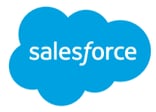Inbound Marketing for Enterprise Companies: Implementing Campaigns Effectively to Deliver Ambitious Growth
What if we were to tell you that Inbound Marketing can help turn your enterprise’s ambitious growth plans into reality?
Here’s everything you need to know.
-
What the Marketing Landscape Currently Looks Like for Enterprise Companies
-
Inbound at Scale: What to Consider and How to Organise it All
Not got time to read all this now? Don't worry, you can download it for later by clicking the button below.
What the Marketing Landscape Currently Looks Like for Enterprise Companies
Whether it’s a lack of capabilities that they can provide compared with an agency or just a lack of knowledge within inbound marketing, enterprise businesses typically struggle with in-house marketing for various reasons.
But does this mean they’re doomed from the very start? Or are they capable of carrying out successful inbound marketing campaigns?
In-house teams usually struggle with the following problems…
Lack of Experience
In marketing, particularly within inbound marketing, experience is everything. An enterprise’s in-house teams usually lack the relevant experience that’s needed to implement inbound campaigns successfully.
Whereas, a marketing agency will already have years of experience that they can bring to the cause and will know the methodology like the back of their hands. After all, they’re experts for a reason.
Restricted Access to Specialist Skills and Features
Without access to specialist skills, in-house teams can’t expect to reach the same heights as experts in the game, can they? But you try to hire new people for each of the roles, costs can soon rack up. And then there’s the issue of time as even when you’ve hired these people, it’ll take a while to get them trained up to full speed.
Agencies are equipped and ready to go with their own specialties as and when you need them. The right inbound agency will have a different person to fit each role and should be able to offer you:
- Persona Creation
- Blogging
- Workflow Automation
- Calls To Action
- Landing Pages
- Database Segmentation
- Campaign Management
- The Buyer’s Journey
- Campaign Recovery
- Content Creation
Limited Time to Dedicate to Inbound
There should be no half efforts when it comes to an inbound campaign. In theory, enterprise businesses would just ask their in-house team to look at launching the campaign but this is where they’re going wrong. It’s all well and good asking your current marketing department to look after an inbound campaign and steer it to great success, but what’s the likelihood of it actually happening?
Not very likely, to be brutally honest. An effective inbound marketing campaign needs a team’s undivided attention. As enterprise businesses are larger in stature than most, the sign-off time for an inbound campaign would be unrealistic if you can’t give it your full attention.
So, What’s the Solution?
That’s where agencies come in. They can offer more than your in-house team. They’re on hand to support you and give your target audience full-time attention. Remember, the success of your campaign is down to your audience at the end of the day and if you’re unable to provide them with the attention they need to nurture your sales, then it’s not going to do as well as it could, is it?
Inbound at Scale: What to Consider and How to Organise it All
As a blanket statement, inbound marketing is a relatively simple concept. Basically, good content receives a lot of traffic and consistently converts this traffic into leads and loyal customers. Easy, right? Wrong.
The inbound methodology is especially effective within smaller businesses, with almost 85 percent of SMBs adopting the inbound approach. But on a global scale and on the international market, you’ll have to make a vastly different approach and consider a number of other strategies.
Website Optimisation
Optimising your business’ websites is the first strategy that you should address when globalising your inbound strategy. Start off by translating your site into different languages of countries that frequently interact with your brand.
By translating your content, you’re reaching a wider audience and not restricting it to just the people who can fluently speak and understand your chosen language. Imagine yourself landing on a website that’s published in a language that you don’t speak. You’re likely to quickly head for the ‘back to results’ button as you don’t have a clue what to look for.
TIP: Make sure that your translations are correct and take into account different rulings and tenses of other languages. There’s one thing having untranslated content but poorly translated content is just as bad, if not worse for your business.
Global SEO
SEO and keywords are essential to any inbound marketing campaign, but even more so on the international stage. If you’re thinking about entering a new market, then your keywords are what will start gaining your traction.
Optimise your site further with local keywords and think carefully about what keywords your prospective audience will be searching for to bring up certain products. You want to be as high as you can on the search engine results page (SERP), as the higher you are on the page, the more likely you are to get noticed.
TIP: Try and use these keywords a few times in your quality content and make sure that they’re mentioned in your meta description too. This gives the keyword more value and will help it rank higher on the page. After all, nobody goes to even the second page of results on Google, nevermind being bottom of the pile on the last page.
Content Distribution Strategy
Basically, if you’re creating amazing content, then it needs to be distributed in an effective way for it to achieve its true potential. It’s no good uploading your content at inconsistent timings as people will get fed up of the unpredictability of the delivery.
It’s not all about when it’s delivered though, how it’s delivered is a massive thing too. You need to shout about your amazing content so it gets noticed. So, every time you produce a new piece of content, you should amplify it through your social media accounts or even use paid ads to reach a further international audience.
TIP: Weekly, bi-weekly or monthly are all recommended distribution times that are proven to work well. And when you’re posting it on social media, don’t forget to adjust your tone of voice and format of the content for the different channels. For example, discussion posts are great for Linkedin while videos work well on Facebook.
Reaching out to an international market is no mean feat, so a careful strategy must be put in place in order to give yourself the best chance of success. You need to stick to your global marketing strategy and enforce it throughout each campaign you release. Stick to this and you’ll start to see the results that you’ve been longing for.
The Enterprise Strategies to Consider
When it comes to actually carrying out and implementing your campaign, it’s important that you adhere to a set strategy. There are various ways that enterprise businesses can go about their marketing, but we recommend the following strategies to help you achieve great levels of success.
Account-Based Marketing (ABM)
Without stating the obvious too much, ABM is marketing that is targeted at specific accounts or businesses. You use data and research to identify which businesses or accounts you’d like to target and can then tailor your marketing campaigns in ways that will appeal and engage with them.
According to studies, over 80 percent of marketers that measure ROI say that ABM initiatives outperform other marketing investments. Included within this, 62 percent of B2B companies said that they have a full account-based marketing programme in place.
ABM and an inbound strategy can work perfectly together. When done correctly, the combination of ABM and inbound works brilliantly as there’s a focus on marketing efforts being relevant, buyer-focused and personalised so it resonates with your audience.
Tips on Doing ABM the Right Way with HubSpot
- Get really specific about the accounts you’re targeting.
- Create valuable content for your personas, such as case studies and personalised videos.
- Get that relevant content in front of the right people at the right time.
- Identify your key accounts by digging into what you know about the companies and use account scoring in HubSpot to determine which accounts are actually engaged with your company.
- Expand your reach by creating content in HubSpot that helps personas influence others and make your content easily shareable.
- Nurture your accounts using company-level insights.

Over 80 percent of marketers that measure ROI say that ABM initiatives outperform other marketing investments.
Event Marketing
So you’ve got an event coming up and now it’s time to drum up some interest to make sure you actually have people sitting in those seats.
Exciting times. But you need more than one lengthy LinkedIn post or trying to squeeze an announcement inside the 280 Twitter character limit. One massively beneficial channel to turn to is email as automation can take your event marketing plan to the next level.
You also need to think about your speakers, ways you can make your attendees feel special and any other methods to drive those early registrations for a packed event. Here are some more useful ideas you should think to incorporate.
Event Marketing Ideas to Implement
- Send out an announcement email to drive registrations early and make your enthusiastic readers feel special.
- Add a sizzler video of previous event footage as studies show buyers prefer to watch videos rather than simply reading.
- Showcase your speakers in one email to help entice people into attending and hearing from industry leaders.
- Offer contribution opportunities so attendees feel like their input is genuinely valued.
- Studies revealed that event planners consider early bird discounts as the best promotional method for events. Do the same and offer discounts to drive early registrations.
Personalised Marketing
Studies have shown that businesses that adopt personalised marketing see an average of a 19 percent increase in sales while 80 percent of consumers are more likely to do business with a company if they offer a personalised experience. So, customers value it but only if you do it right.
The thought process behind this is that personalised experiences can foster greater customer loyalty and better return on marketing investment. We’ve seen how successful personalisation can be. Coca-Cola arguably does it the best with their ‘Share a Coke’ - so it does work.
While personalisation is great and can have a lot of success, there are some key mistakes you should avoid.
Personalisation Mistakes to Avoid
- Make sure you have default field backups in a platform like HubSpot so fields aren’t left empty and your emails don’t look unprofessional.
- Don’t be creepy and use personalisation too soon. Use information to help users in their marketing journey so it doesn’t come across too strong.
- Don’t bombard leads with marketing materials as they’ll switch off much quicker.
- Don’t forget to make your personalised campaigns narrower over time so your campaigns stay as focused as possible.
- Don’t collect too much information too early as this can reduce conversion rates. Stay patient and gather crucial information over time.
80 percent of consumers are more likely to do business with a company if they offer a personalised experience.
Using HubSpot to Deliver Enterprise Marketing
HubSpot’s all-in-one enterprise marketing software is ideal for both your sales and marketing teams. So, here are the HubSpot enterprise features you should know about.
Marketing Hub Enterprise
HubSpot Marketing Hub Enterprise software has pretty much everything your teams will need to run successful enterprise inbound marketing campaigns. The features will make your target audience interested in your business and actually value being one of your customers.
Enterprise-Only Marketing Features
- Hierarchical Teams
- Custom Event Reporting
- Predictive Lead Scoring
- Event-Based Segmentation
- Single Sign-On
- Content Partitioning
- CMS Membership
- Email Send Frequency Cap
- YouTube Integration
Other HubSpot Enterprise Marketing Features
While the features above are strictly limited to enterprise tiers, that doesn’t mean they’re the only features available. Other features which can be found in other tiers also include:
- Pop-Up Forms
- Collected Forms
- Native Forms
- Ad Management
- Conversations Inbox
- Team Email
- Live Chat
- Conversational Bots
- Email Marketing
- Lists
- Mobile Optimisation
- User Roles
- Reporting Dashboards
- Phone Support
- Blog and Content Creation Tools
- SEO and Content Strategy
- Social Media
- Calls-to-Action
- Landing Pages
- Standard SSL Certificate
- Competitors
- Subdomain Availability
- Marketing Automation
- Salesforce Integration
- Smart Content
- Attribution Reporting
- A/B Testing
- Video Hosting and Management
- Multiple Teams
- Multiple Currencies
- Google Search Console Integration
- Custom Reporting
The Link Between Enterprise Marketing Hub and Enterprise Sales Hub
Both the Marketing and Sales Enterprise tiers include all of the features of the HubSpot CRM. Marketing Hub and Sales Hub is built on top of the HubSpot CRM which gives you and your teams access to the features below:
- Contact Management: Build views and run automated actions to manage your data and contacts.
- Contact Website Activity: See detailed interactions between your contacts and your website in a single place.
- Companies: Store records for every company in your database and consolidate all communications and details in a single place.
- Deals: Store, track, manage and report on the deals that your sales team is working on.
- Tasks and Activities: Store, track, manage and report on activities that make up your customer relationships.
- Company Insights: Automatically enrich company records with useful data.
- Outlook and Gmail Integration: Connect Outlook or Gmail with HubSpot CRM to enable time-saving features.
- HubSpot Connect Integrations: Choose from a library of integrations which you can easily connect to your HubSpot account.
- Custom Support Form Fields: Add custom fields to support forms you use to collect enquiries.
- Ticketing: Log customer issues which can be assigned to team members, organised and prioritised in a central location.
- Prospects: See which companies visit your website.
Sales Hub Enterprise
HubSpot’s Sales Hub Enterprise software includes a full suite of tools that’ll boost your sales team’s productivity, shorten deal cycles and make their process more human-friendly without overworking them. Your sales team will have plenty of useful tools to close more deals with a lot less work.
Enterprise-Only Sales Features
- Hierarchical Teams
- Predictive Lead Scoring
- Playbooks
- Call Transcription and Recording
- Calculated Properties
- ESignature
- Recurring Revenue Tracking
- Goals
- Quote Approvals
- Single Sign-On
Other HubSpot Enterprise Sales Features
Like the Marketing Enterprise Hub, the Sales Hub also has many more features you and your sales team can use. These include:
- Email Scheduling
- Email Tracking and Notifications
- Email Templates
- Documents
- Calling
- Meetings
- Canned Snippets
- Reporting Dashboards
- Conversations Inbox
- Live Chat
- Conversational Bots
- Team Email
- Conversation Routing
- Sequences
- Phone Support
- Multiple Teams
- Multiple Deal Pipelines
- Multiple Currencies
- Sales Automation
- Required Fields
- Products
- Quotes
- Smart Send Times
- Smart Notifications
- Salesforce Integration
- 1:1 Video Creation
Using HubSpot’s enterprise features is a great start for your sales and marketing teams, as well as the company as a whole. The next step is to know how you can put these into action and how you can use these features to create strategies that will take your enterprise inbound campaigns to the next level.
How to Implement Your Campaign and Succeed
Obviously, we can’t list all 200 integrations here. Instead, we’ve narrowed it down to four integrations your sales and marketing team should use to align their tech stacks, improve their processes and drive further growth.
1. Video - Vidyard

With more focus on video content than ever before, your sales and marketing teams can unlock the full potential of video in HubSpot with the Vidyard integration. The integration lets your teams use video to create powerful connections at all stages of the customer journey, ranging from generating leads to closing deals to delight your customers - all inside HubSpot.
2. Sales - Salesforce

Salesforce is arguably one of the most popular integrations on HubSpot and for good reason. It allows for a fast, reliable and powerful integration between both databases so that your sales team is given powerful lead intelligence. Most importantly, it keeps your sales and marketing teams aligned and their databases in perfect harmony.
3. Email - MailChimp

HubSpot helps you manage and grow your sales pipeline by enriching leads, tracking leads, making calls and much more. MailChimp helps you manage your mailing lists, send brilliant emails, track results and more. So, it makes complete sense to integrate the two to really drive business growth.
4. Ecommerce - Shopify

The HubSpot and Shopify integration makes it easier than ever to bring HubSpot’s power and insights to Shopify. Your teams will be able to see online sales in HubSpot as deals, organise and analyse purchasing patterns and even measure customer lifetime value. The combined power of HubSpot and Shopify gives your teams the perfect tools they need to build much more sophisticated ecommerce marketing strategies.
How to Get Buy-In
Smaller businesses can adopt the inbound approach much quicker and more effectively than enterprise companies. The main reason being that fewer bodies have a say when a business is smaller, whereas the message needs to be understood and signed off by plenty of big-names, ranging from CEOs to directors.
Here are some key suggestions on how to get your bosses on side with the inbound methodology.
Tell Them How Beneficial Inbound is
Just like when you were little trying to persuade your mum to let you play out for a while longer, you need the right argument to get your business to adjust its strategy. One way in particular that is super-effective in persuading enterprise companies is to show them the key benefits of inbound marketing.
Businesses aren’t going to willingly invest their time and money into something if they’re not entirely sure of what they’ll be gaining from it. But what are the key benefits of inbound marketing within enterprise businesses? Well…
- It saves money and improves the overall efficiency of your business.
- It helps build a strong, recognisable brand.
- Retain customers more effectively and turns them into loyal brand advocates.
- Communication is two-way.
- Your marketers provide real value.
- Content is provided to inform or educate, therefore people actively seek it out as opposed to getting annoyed by people persisting and intruding with spam emails.
Show Your Bosses the Key Statistics
If there’s one thing anybody can’t argue with, it’s statistics. Cold hard facts that not even the biggest blagger can talk their way out of. By presenting your bosses with these statistics, you’re justifying why implementing the inbound methodology is a good idea to move forward with.
One HubSpot study found that:
- Inbound can help save costs. Inbound leads cost 61 percent less than outbound leads. While inbound efforts like blogging, social and SEO require a higher time commitment, it’s proven that they’ll generate leads at a cheaper cost.
- Inbound marketing can help you stay ahead of the competition. Nearly 60 percent of marketers have already adopted the strategy so if your current efforts are one-dimensional, you’ll probably get left behind.
- Your content is what draws potential customers. Companies that blog generate 126 percent more leads than those that don’t. Plus, 43 percent of marketers report that they’ve generated customers directly from their blogs.
- Lead automation is a proven way of growing your business. Companies that automate lead management see a 10 percent or greater increase in revenue within six-to-nine months.
Well-Known Brands That Have Adopted Inbound Marketing
It’s all well and good providing the statistics, but without any real-life examples, you’re not going to convince anybody, nevermind your superiors. As we mentioned earlier, it’s not just the smaller companies who utilise inbound methodology and implement the savvy strategies, but global companies also make the most of it too.
- Nike: Alongside their huge outbound efforts, Nike has adopted inbound marketing traits through blogging, pushing content through social media channels and also influencer marketing. With video being a huge part of inbound marketing, Nike used it perfectly after their ‘Dream Crazy’ video campaign saw a 31 percent surge in sales.
- Starbucks: Starbucks offer personalisation to the highest level. They’re customer-centric, get to know their customers on a first name basis and their misspelling of names is a great tactic. Their personalised experiences have increased chances of customers returning - proven by over $110 million worth of funds being loaded onto loyalty cards.
- Dell: Dell put importance on customer feedback, rolling out product releases on social media and engaging customers by asking questions. They use Facebook for videos, push them on Twitter, engage with their audience and their emails have seen a 500 percent increase on downloads.
To read more about the brand above and how they use inbound marketing well, head over to this blog.
By using the above tips you’ll be able to stump up a more than sound argument to your bosses and superiors. Hammer home the positives of inbound marketing and make sure to convince them that it’s not only for small businesses to make the most of, as many people wrongly believe.
Contact Us Today and Get Answers to Your Questions and Queries
Delivering successful inbound campaigns at an enterprise level is quite challenging, especially when you try and do it in-house. The learning curve can be steep, you’ll need experts in all of the areas we’ve mentioned above and quite frankly, it can take your focus away from your regular day-to-day activities.
That’s not to say you can’t enjoy the rewards of adopting the inbound approach. Luckily for you, there are agencies out there that specialise in inbound marketing and have the results to back it up.
When it comes to picking a HubSpot agency, you need to have the confidence that you’ve chosen the right one. An agency with a great track record of success, access to the latest innovations and if they’re a Diamond agency - then that’s even better.
We’re Digital 22, a Diamond HubSpot agency, the largest in the UK and the number one rated agency in Europe. In fact, we were won the prestigious HubSpot 2018 Partner of the Year Award, so you’ll be in safe hands with experts that live and breathe inbound marketing.
If you want more information on how we can help you achieve great results and reach your goals, then get in touch with us today where our expert team will be happy to help.
Ready to Set Your Enterprise Up For Inbound Success? Book a call with our solutions manager today.
Real Growth. Real Impact.
'Should I use HubSpot?' 32 fundamental reasons why you should
21 cost-effective marketing campaigns you can create right now
Breeze: Everything you need to know about HubSpot's powerful AI
INBOUND 24 learnings and updates
Google Search API leaks: All you need to know [LIVE BLOG]
The top 6 marketing challenges of 2024
Inbound vs outbound marketing: What's the difference?
See why enterprises choose Avidly
Let’s build your HubSpot success story
Compelling final call to action - with accompanying link to Contact page












![Google Search API leaks: All you need to know [LIVE BLOG]](https://www.avidlyagency.com/hs-fs/hubfs/cloud.jpg?width=400&height=225&name=cloud.jpg)


